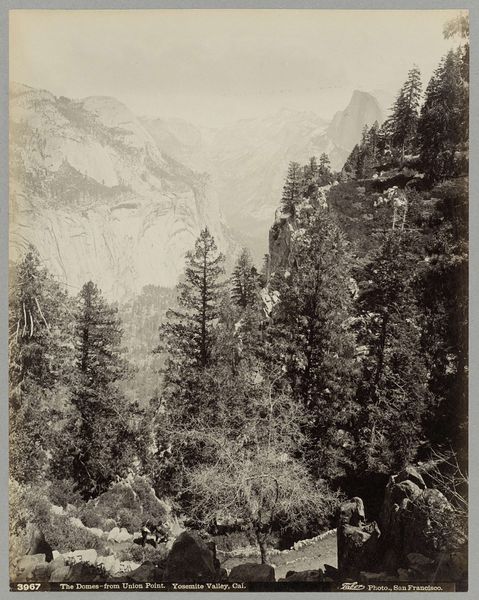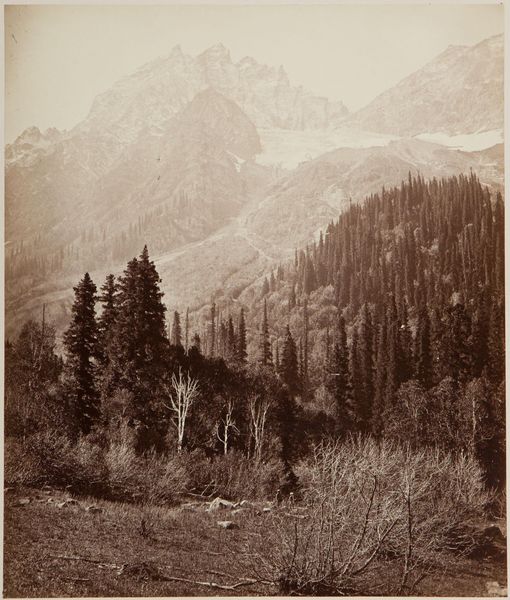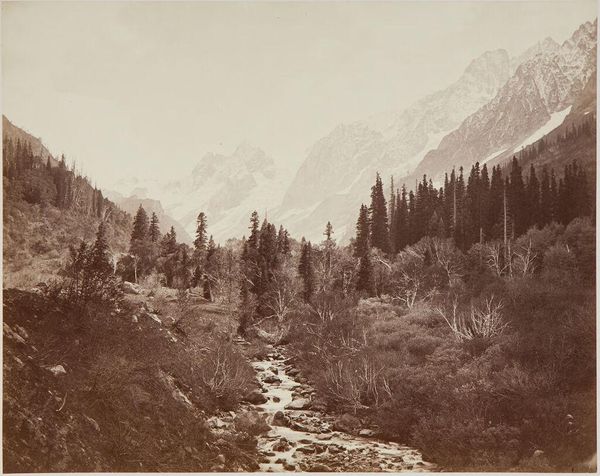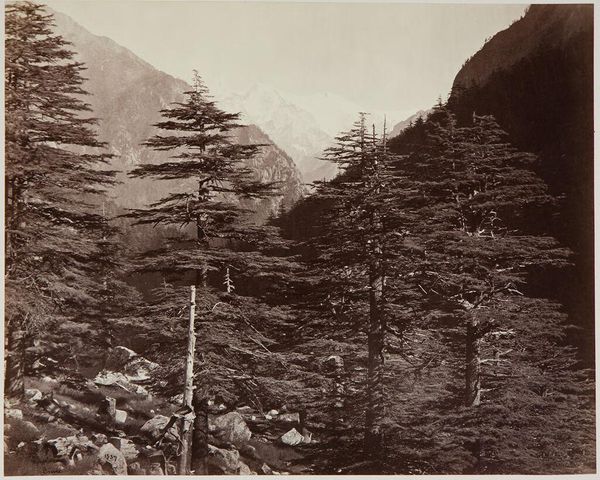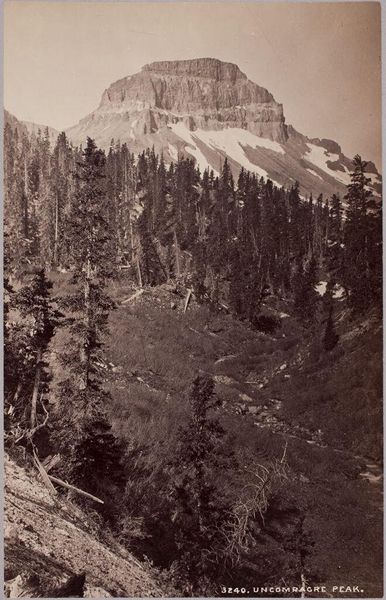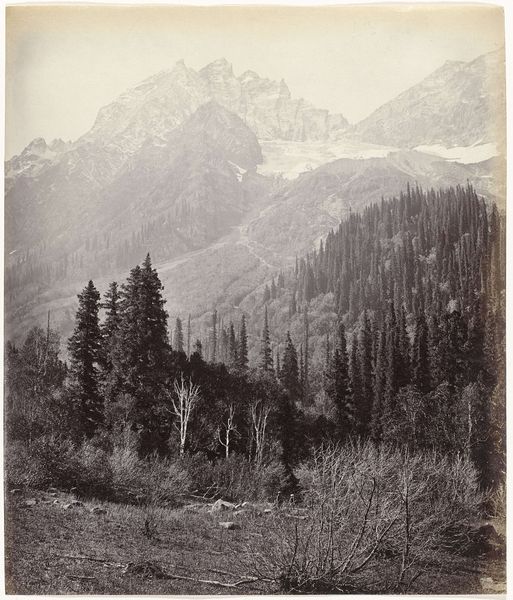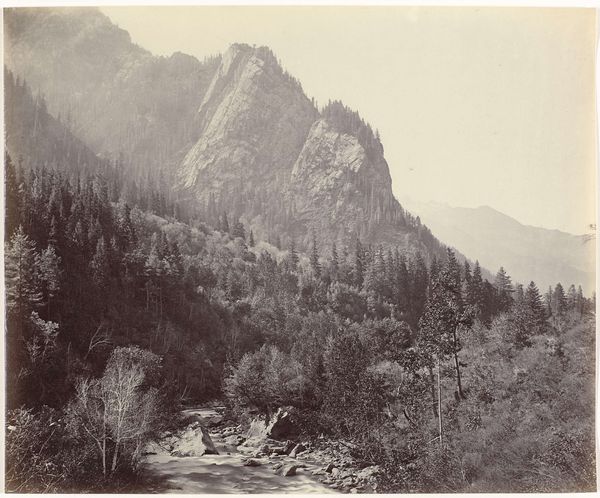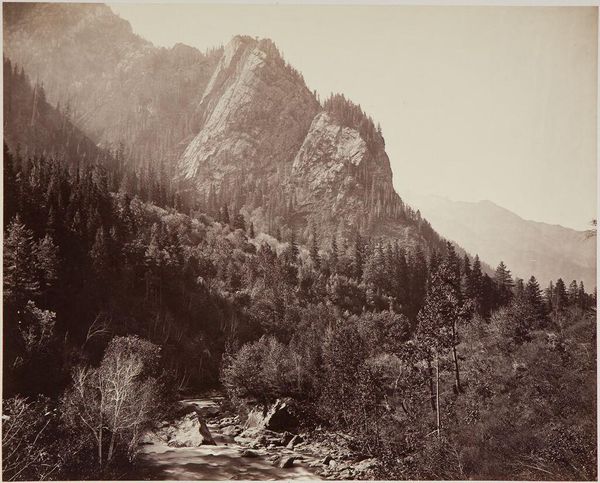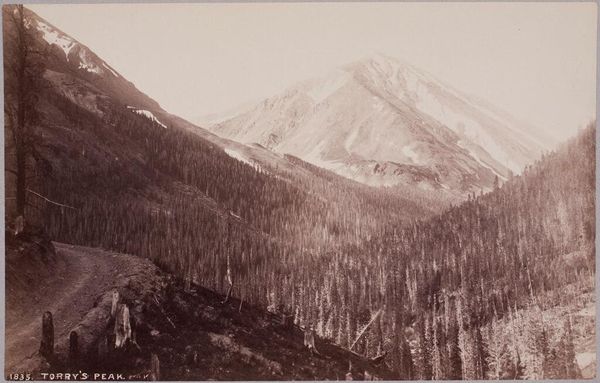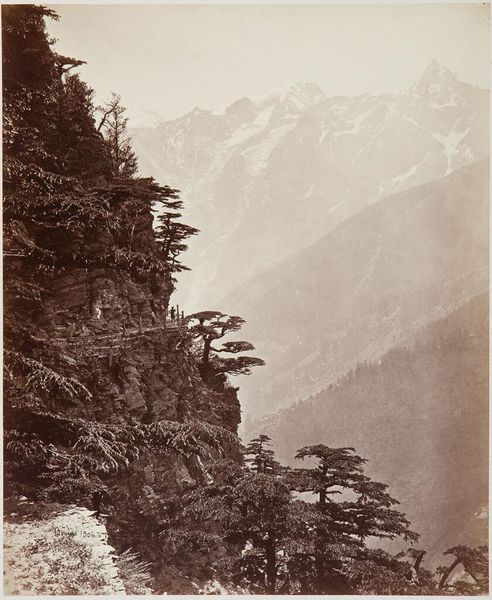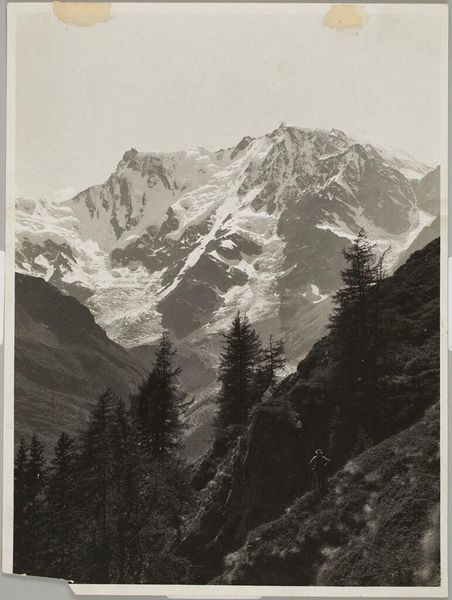
Dimensions: image: 29.8 x 24.1 cm (11 3/4 x 9 1/2 in.) mount: 55.8 x 45.8 cm (21 15/16 x 18 1/16 in.)
Copyright: CC0 1.0
Curator: Samuel Bourne's "View in Wanga Valley" captures a striking vista. It's a landscape photograph, the exact date of which is unknown, currently residing in the Harvard Art Museums. Editor: It's moody, almost oppressive. The towering pines seem to barricade the snow-capped mountains in the distance. There's a palpable sense of isolation. Curator: That feeling might stem from Bourne's position as an outsider. He photographed extensively throughout India during the British Raj, documenting landscapes and cultures from a colonial perspective. How does that context shift our reading? Editor: It layers a complex dimension. Those pines, reaching skyward, become not just trees, but symbols of aspiration, perhaps even colonial ambition, piercing an unfamiliar land. Curator: Indeed. The very act of photographing and naming this "view" becomes an act of claiming space and knowledge. It reminds us that landscapes are never neutral; they're always imbued with power. Editor: Absolutely. Looking at it now, it's hard to separate the sheer beauty from the complicated history it represents. Curator: Exactly. It's a potent reminder of how intertwined the aesthetic and the political can be. Editor: It leaves you contemplating the dualities, doesn’t it? The sublime and the exploitative, existing in the same frame.
Comments
No comments
Be the first to comment and join the conversation on the ultimate creative platform.

